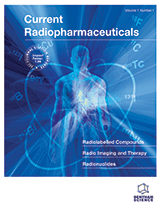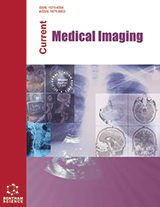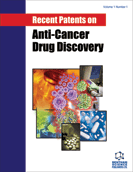Abstract
For the purpose of studying the aging changes of macromolecular synthesis in the pancreatic acinar cells of experimental animals, we studied 10 groups of aging mice during development and aging from fetal day 19 to postnatal month 24. They were injected with 3H-uridine, a precursor for RNA synthesis, sacrificed and the pancreatic tissues were taken out, fixed and processed for light and electron microscopic radioautography. On many radioautograms the localization of silver grains demonstrating RNA synthesis in pancreatic acinar cells in respective aging groups were analyzed qualitatively. The number of mitochondria per cell, the number of labeled mitochondria with silver grains and the number of silver grains in each cell in respective aging groups were analyzed quantitatively in relation to the aging of animals. The results revealed that the RNA synthetic activity as expressed by the incorporations of RNA precursor, i.e., the number of silver grains in cell nuclei, cell organelles, changed due to the aging of animals. The number of mitochondria, the number of labeled mitochondria and the mitochondrial labeling index labeled with silver grains were counted in each pancreatic acinar cell. It was demonstrated that the number of mitochondria, the number of labeled mitochondria and the labeling indices showing RNA synthesis at various ages increased from embryonic day 19 to postnatal newborn day 1, 3, 9, 14, adult month 1, 2 and 6, reaching the maxima, then decreased to senile stage at postnatal year 1 to 2, indicating the aging changes. Based upon our findings, available literature on macromolecular synthesis in mitochondria of various cells are reviewed.
Keywords: RNA synthesis, electron microscopic radioautography, aging mice, acinar cells, pancreas, Mitochondrial RNA, radioautography
Current Radiopharmaceuticals
Title: RNA Synthesis in the Pancreatic Acinar Cells of Aging Mice as Revealed by Electron Microscopic Radioautography
Volume: 5 Issue: 1
Author(s): Tetsuji Nagata
Affiliation:
Keywords: RNA synthesis, electron microscopic radioautography, aging mice, acinar cells, pancreas, Mitochondrial RNA, radioautography
Abstract: For the purpose of studying the aging changes of macromolecular synthesis in the pancreatic acinar cells of experimental animals, we studied 10 groups of aging mice during development and aging from fetal day 19 to postnatal month 24. They were injected with 3H-uridine, a precursor for RNA synthesis, sacrificed and the pancreatic tissues were taken out, fixed and processed for light and electron microscopic radioautography. On many radioautograms the localization of silver grains demonstrating RNA synthesis in pancreatic acinar cells in respective aging groups were analyzed qualitatively. The number of mitochondria per cell, the number of labeled mitochondria with silver grains and the number of silver grains in each cell in respective aging groups were analyzed quantitatively in relation to the aging of animals. The results revealed that the RNA synthetic activity as expressed by the incorporations of RNA precursor, i.e., the number of silver grains in cell nuclei, cell organelles, changed due to the aging of animals. The number of mitochondria, the number of labeled mitochondria and the mitochondrial labeling index labeled with silver grains were counted in each pancreatic acinar cell. It was demonstrated that the number of mitochondria, the number of labeled mitochondria and the labeling indices showing RNA synthesis at various ages increased from embryonic day 19 to postnatal newborn day 1, 3, 9, 14, adult month 1, 2 and 6, reaching the maxima, then decreased to senile stage at postnatal year 1 to 2, indicating the aging changes. Based upon our findings, available literature on macromolecular synthesis in mitochondria of various cells are reviewed.
Export Options
About this article
Cite this article as:
Nagata Tetsuji, RNA Synthesis in the Pancreatic Acinar Cells of Aging Mice as Revealed by Electron Microscopic Radioautography, Current Radiopharmaceuticals 2012; 5 (1) . https://dx.doi.org/10.2174/1874471011205010005
| DOI https://dx.doi.org/10.2174/1874471011205010005 |
Print ISSN 1874-4710 |
| Publisher Name Bentham Science Publisher |
Online ISSN 1874-4729 |
 16
16
- Author Guidelines
- Bentham Author Support Services (BASS)
- Graphical Abstracts
- Fabricating and Stating False Information
- Research Misconduct
- Post Publication Discussions and Corrections
- Publishing Ethics and Rectitude
- Increase Visibility of Your Article
- Archiving Policies
- Peer Review Workflow
- Order Your Article Before Print
- Promote Your Article
- Manuscript Transfer Facility
- Editorial Policies
- Allegations from Whistleblowers
Related Articles
-
VFP: A Visual Algorithm for Predicting Gene Fusion in RNA-Seq Data
Current Bioinformatics Nur77 Family of Nuclear Hormone Receptors
Current Drug Targets - Inflammation & Allergy Urinary Tract Tumors, Biology and Risk for Artificial Sweeteners Use with Particular Emphasis on some South American Countries
Current Nutrition & Food Science Elucidation of Abnormal Extracellular Regulated Kinase (ERK) Signaling and Associations with Syndromic and Non-syndromic Autism
Current Drug Targets Double-Edged Sword of Novel Anti-Cancer Treatment: Proteasome Inhibition in the Growth Plate Causes Impairment of Longitudinal Bone Growth
Current Pediatric Reviews Apoptosis-Inducing Effects of Amaryllidaceae Alkaloids
Current Medicinal Chemistry Bladder Cancer: Update on Risk Factors, Molecular and Ultrastructural Patterns
Current Medicinal Chemistry Etravirine in the Treatment of HIV-1: A Clinical Overview for Healthcare Professionals
Current HIV Research The Future of Collateral Artery Research
Current Cardiology Reviews On the Epistemological Crisis in Genomics
Current Genomics Advances in Lentiviral Vectors: A Patent Review
Recent Patents on DNA & Gene Sequences Ultrasound Imaging of Cervical Anatomic Variants
Current Medical Imaging Polymeric Nanocarriers for Drug Delivery in Osteosarcoma Treatment
Current Pharmaceutical Design Antitumoral-Lipid-Based Nanoparticles: a Platform for Future Application in Osteosarcoma therapy
Current Pharmaceutical Design A Review of Pharmacological and Phytochemical Studies on Convolvulaceae Species <i>Rivea</i> and <i>Ipomea</i>
Current Traditional Medicine Morphological and Functional Characteristic of Senescent Cancer Cells
Current Drug Targets Chemical Advances in Therapeutic Application of Exosomes and Liposomes
Current Medicinal Chemistry KRAS: A Promising Therapeutic Target for Cancer Treatment
Current Topics in Medicinal Chemistry Selective Cytotoxic Effects of 5-Trifluoromethoxy-<i>1H</i>-indole-2,3-dione 3-Thiosemicarbazone Derivatives on Lymphoid-originated Cells
Anti-Cancer Agents in Medicinal Chemistry Synthesis of Aza-BODIPY Boron Difluoride PDT Agents to Promote Apoptosis in HeLa Cells
Letters in Organic Chemistry






















